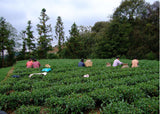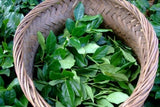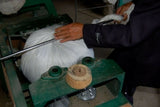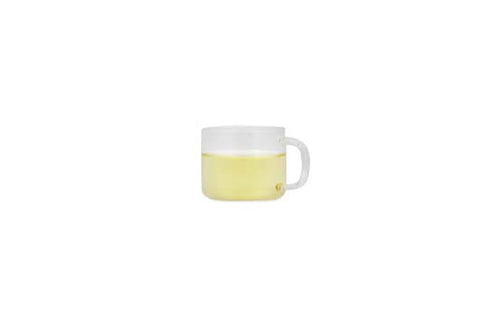Tie Guan Yin - oolong tea
$3.95

| Style | Oolong Tea | |
| Origin | Zhang family, Anxi, Fujian Province, China | |
| Season | May Harvest | |
| Altitude | 1000m | |
| Batch | SCTGY1 | |
| Plant | Jinguan Yin | |
| Tea Master | Master Zhang |
You won’t find another tea quite like this one. The flavour intensity is unlike anything we’ve experienced before. Plucked by hand to exacting standards for just 20 days each year, from the high mountains of Anxi. Crafting this intensely flavourful, aromatic and moreish ball-style oolong involves 18 separate steps over 40 hours.
It is buttery, fruity and full bodied. It leaves a honey sweetness on the palate and the flavour evolves over multiple infusions, layer by layer. No chemical fertiliser, pesticide, or herbicide was used in the production of this tea.

The Stories We Drink
|
This tea is also called Iron Goddess of Mercy and it’s famed for its complexity, terroir-driven individuality and complex craftsmanship. Tie Guan Yin comes from the small county of Anxi in Fujian Province. It is also produced in Taiwan but its true home is China. Our Tie Guan Yin is a family affair thanks to Master Zhang, his brother and his nephew. We only source a very specific batch of tie guan yin from the Zhang’s. Harvest season for this tea lasts around 20 days and the Zhang’s reserve the leaves picked on the sunniest of these days and combine them to produce this premium batch. The warmth of the sun on the leaves drives specific molecular activity which increases the flavour and aroma. The Zhang’s garden sits on the outskirts of Anxi in Daping village and is one of the highest altitude plots in the area which separates the garden from the major producers who often use chemical intensive farming practices. Because the Zhang’s are the very top of the mountain they don’t experience any pesticide run off and they use pure and original tie guan yin heirloom bushes. Most gardens use a different cultivar which has a greater yield and inferior flavour, and technical this isn’t authentic tie guan yin. The Zhang family has long been under pressure to replace their tea gardens with rice crops but they have resisted and persisted with growing and producing tea as their livelihood. Much of the processing magic happens in their small courtyard over 20 days during May. This is later than most other gardens in the region because their plants are at a higher elevation in a cooler climate which means the leaves take a little longer to grow and yield. This is a gorgeous tea with an amazing intensity. It’s buttery, fruity, full bodied, sweet and has the tiniest touch of sourness at the back of the palate – a characteristic unique to the original tie guan yin cultivar that really sets it apart from other examples. The leaves are rolled into tiny balls, one of the many steps in the complex craftsmanship of this tea. The leaves will last for multiple infusions and release new flavours and aromas with each steep. Our special favourite is steep number three. |
|
Craftsmanship
Ball style oolong teas like tie guan yin are notoriously complex to craft. Tea masters often work for up to three days straight to make sure each step in the process occurs exactly as it should. The slightest error in judgment can render a batch ruined.




























